What do you need to know about a hair transplant?
Learn more about: going bald, what the difference is between the donor area and the recipient area, how a hair transplant or hair implant is performed, how much hair is needed and whether you are suitable for a hair transplant.
Why am I going bald?
Losing hair is a natural process, as a human being loses between fifty and one hundred hairs every day. However, new hairs are normally added. Because of this, there is no question of going bald. If you suffer from excessive hair loss, bald patches can occur. This is often a reason why someone seeks out a hair transplant practice.
There are several causes of excessive hair loss. For example, it can be a result of stress. Hair loss can also be a result of a genetic process called androgenetic alopecia.
The baldness in androgenetic alopecia is caused by the hair follicles being sensitive to the hormone dihydroxy-testosterone (DHT). DHT attaches itself to the hair follicles which then causes the hair follicles to shrink, thus shortening the growth phase. Eventually, this will cause no new hair to grow. At this point you can undergo a hair transplant.
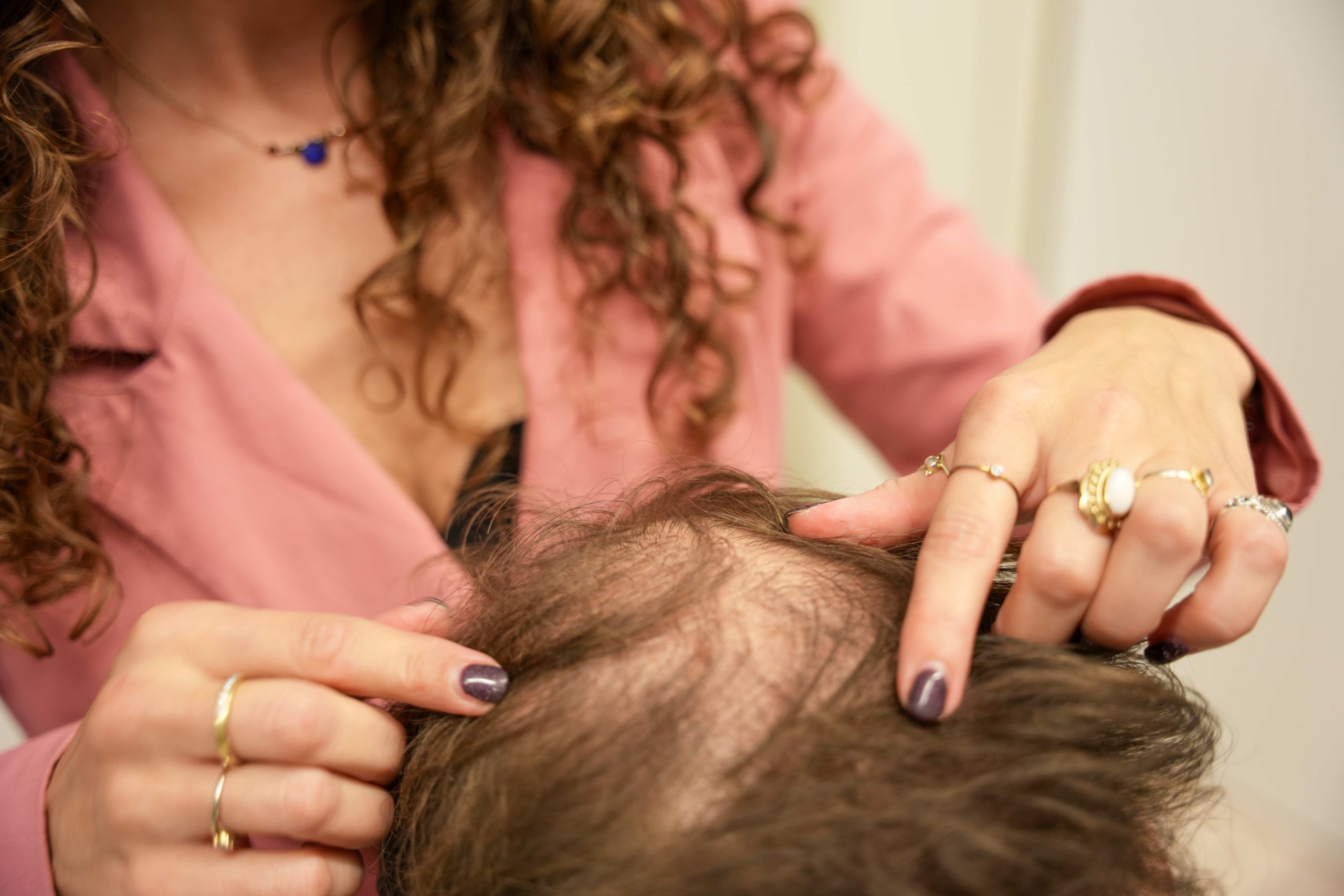
How does the hair loss process occur in…
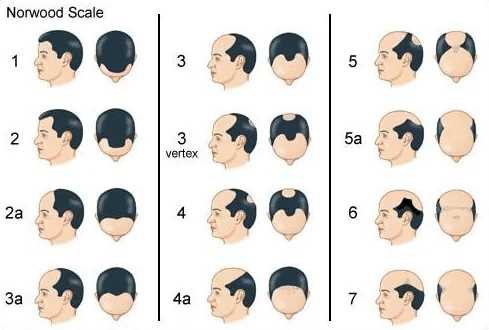
men
Through the image it is easy to form a picture of hair loss. What is noticeable is that the hair growth at the back of the head and on the sides is permanent. This is the part that is used for the hair transplant. This is because these hairs are not hereditary for baldness.
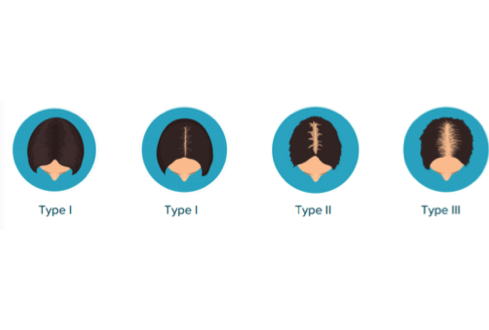
woman
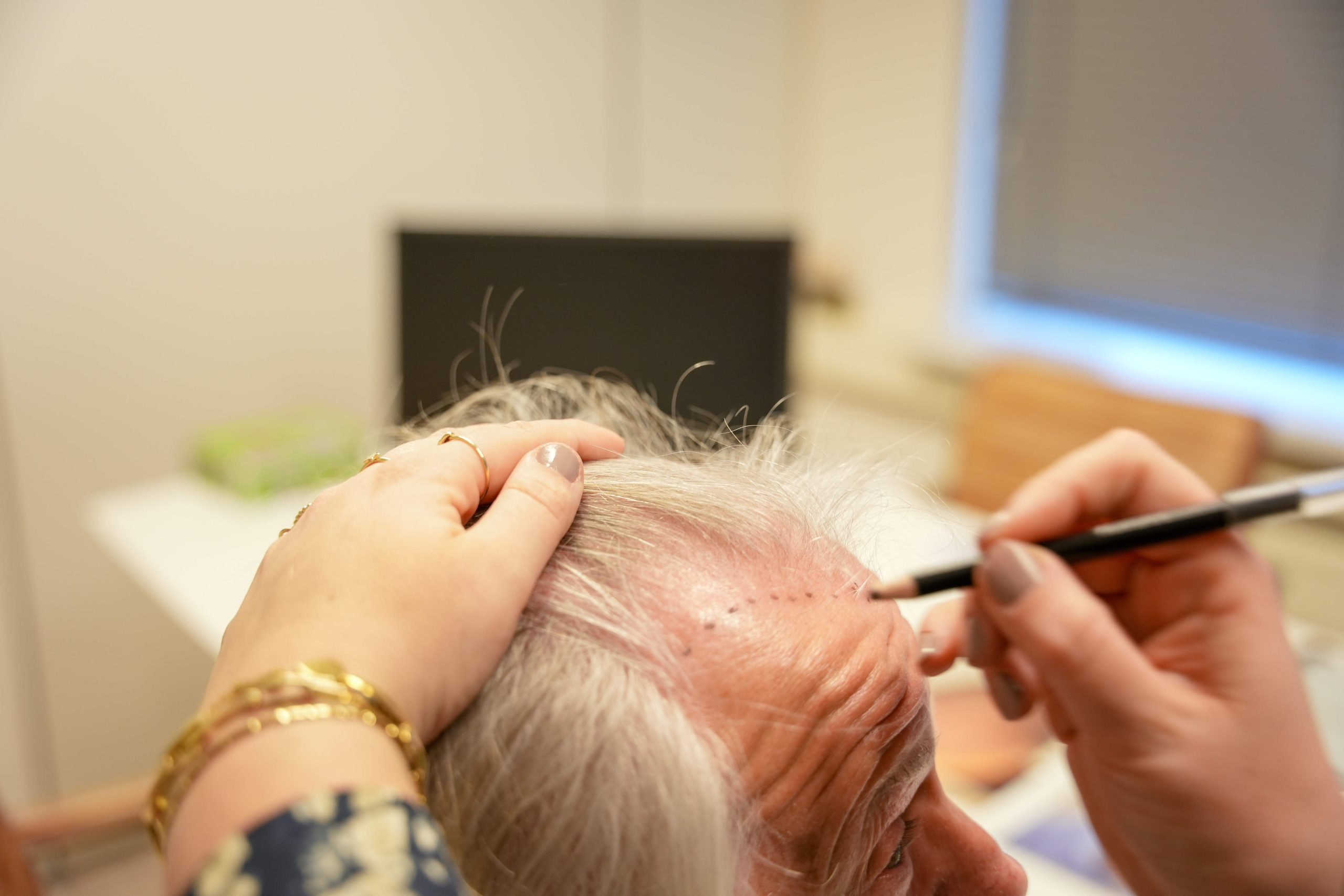
What is a hair transplant?
A hair transplant at Hair Clinic Wolf is a permanent solution to hair loss. A hair transplant helps you take back control of your appearance, look younger and boost your self-confidence and lifestyle. With hair transplantation, there is a solution to permanently restore fallen hair.
A hair transplant involves moving healthy hair follicles, which are not prone to hair loss, from the back of the head to the area where baldness occurs. These hair follicles begin to produce new hairs over time, making the bald patches disappear.
A hair transplant is performed under local anesthesia. Because of the local anesthesia and because the hair transplant is performed by a professional team, a hair transplant is not invasive for the patient. But how does hair transplantation work? We are happy to explain it to you.
How does hair transplantation work?
In a hair transplant, hair follicles – also called grafts – are moved from the hair crown at the back of the head to the treatment area. This can be the scalp, but also the eyebrows. Because the hairs growing in the hair crown are immune to hair loss, they continue to produce lifelong hair in their new location. Hair follicles can be relocated in several ways. Which way is most appropriate for you will be determined together with the doctor. Read more about the different hair transplant techniques.
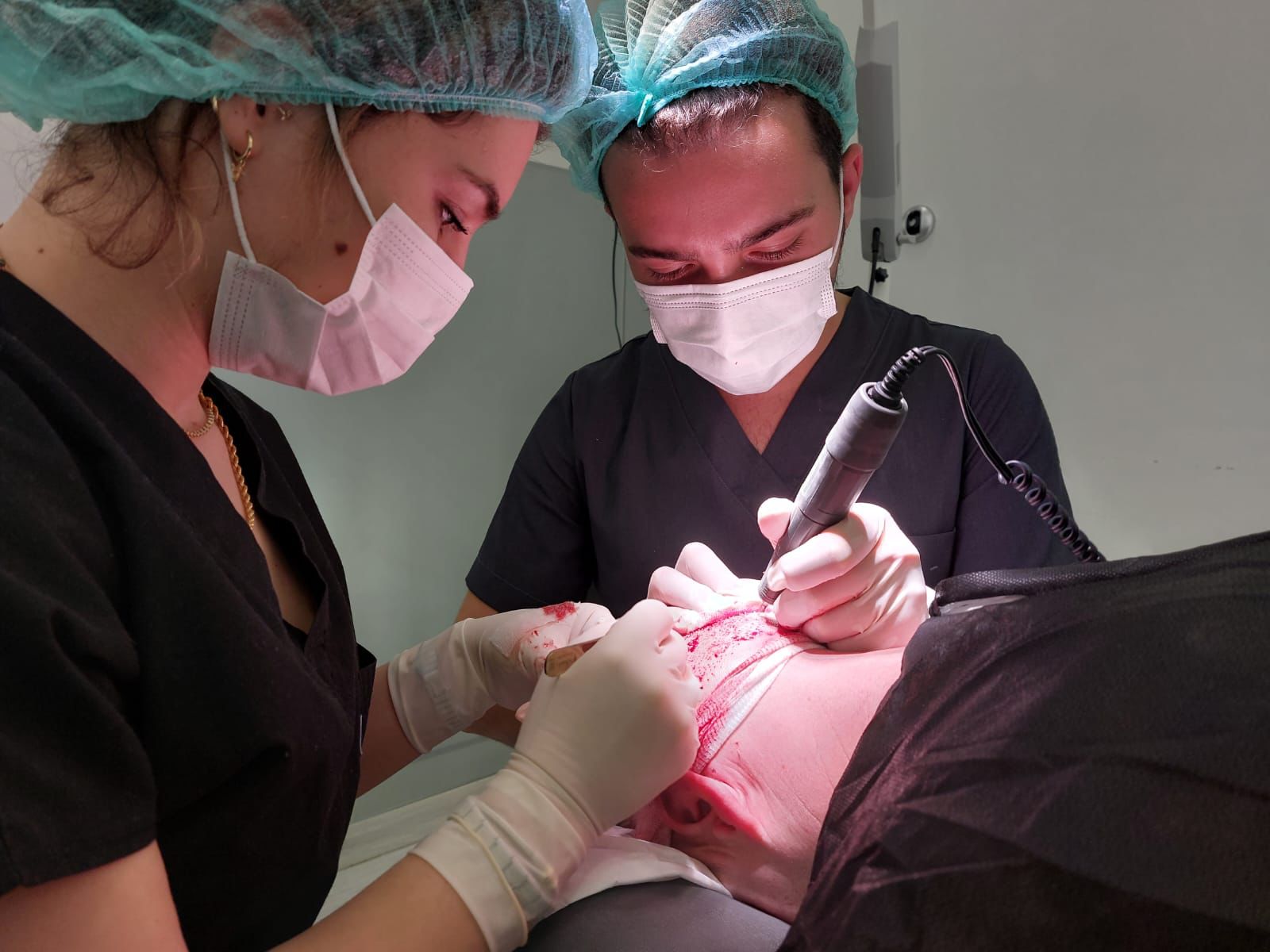

How much hair is available for a hair transplant?
About 75-80 grafts grow in the donor area per square centimeter. A person has a total of about 14,000-15,000 grafts available in the donor area. However, it is important not to harvest too many hairs to avoid baldness in the donor area. Our specialists always take this into account. This is how we achieve the most beautiful result. You can see these results for yourself on the page about hair transplants before and after treatment!
Am I suitable for a hair transplant?
In a hair transplant, hair follicles – also called grafts – are moved from the hair crown at the back of the head to the treatment area. This can be the scalp, but also the eyebrows. Because the hairs growing in the hair crown are immune to hair loss, they continue to produce lifelong hair in their new location. Hair follicles can be relocated in several ways. Which way is most appropriate for you will be determined with your doctor. Read more about the different hair transplant techniques.

Schedule a consultation by phone or a our clinic!
![]()
1. The consultation
During the consultation we will discuss all your wishes and you will have every opportunity to ask questions. This can be done by phone, at your home or at our office..
![]()
2. Start treatment
You will receive guidelines from us to make the treatment as effective as possible. Treatment takes place in Istanbul or the Netherlands.
![]()
3. Aftercare
We continue to advise you after the treatment. You will receive advice on products, washing and any follow-up treatments, among other things.
We receive an average rating of 4.9 out of 5 ![]()
![]()
![]()
![]()
![]() via Google Reviews!
via Google Reviews!
What customers find?

It felt very good and familiar from the first moment!
“After conversations at Dutch clinics, I chose Hair Clinic Wolf after contacting Lieselotte. Everything felt right away. Lieselotte patiently answered all my questions. Together with a friend I went to Turkey on July 30. The commitment and expertise of Lieselotte and the team were palpable. Dr. Taner explained everything clearly and drew my hairline in consultation. The anesthesia was not pleasant, but the day went otherwise without pain. The hotel was neat with friendly staff and good food. On August 2, we were taken back to the airport. Even at home I still feel commitment. I am so enthusiastic about Hair Clinic Wolf that I award it to anyone thinking about a hair transplant. - A. Boerekamps” — A. Boerekamps

I would recommend it to anyone!
"Me and my brother chose Hair Clinic Wolf for a transplant. With Lieselotte there, it felt familiar. Everything was well arranged, from transportation to communication. The surgery was not too bad, the surgeon was friendly and spoke good English. The hospital was like a hotel, the staff was friendly. The hotel was clean and the food delicious. In short, a positive experience that I would recommend to anyone." — Victor
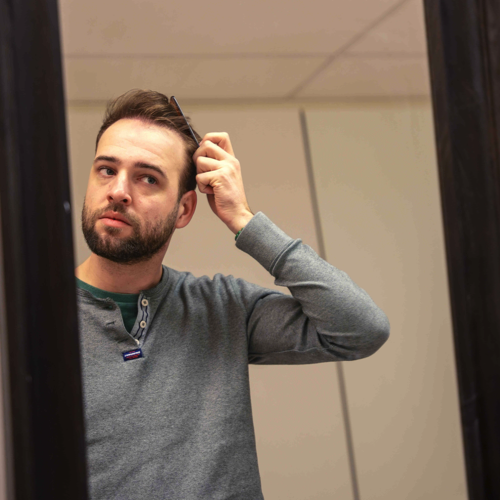
A perfect organization!
"For years I suffered from hair loss and coves, which affected my self-confidence. When I heard about Hair Clinic Wolf, I was immediately excited. The contact with Lieselotte, the founder and an old fellow student, was very pleasant. She took extensive time to discuss my situation and informed me clearly about the procedure and possible risks. The complete unburdening, from transportation to accommodation, was wonderfully arranged. The surgery was not too bad for me, thanks to an experienced surgeon. After a somewhat strange first night in the hotel and the necessary aftercare in the hospital, I flew back to the Netherlands. After a year, my hair is full and covering again. I am glad I took this step and recommend Hair Clinic Wolf to anyone considering a hair transplant.." — Mischa

Very happy with the result!
“At Hair Clinic Wolf, I had a great experience. From the first consultation, I felt welcomed and well guided by Lieselotte and her team. They took the time to understand my needs and explain the procedure.
The procedure itself was very professional. The medical team walked me through the treatment very well. The aftercare instructions were clear.
During the recovery period, Hair Clinic Wolf was always available to check on my progress and answer questions. This gave me great confidence in their expertise.
Now several months after the beard transplant, I am very happy with the results. My beard is fuller and thicker than ever before, which has significantly improved my self-confidence.
I can recommend Hair Clinic Wolf to anyone considering a hair transplant!” - Don
Our treatments
There are various treatment methods to treat hair loss and baldness. You can choose between surgical and non-surgical treatments. The first category covers all hair transplants. Non-surgical treatments mainly aim to treat thinning hair.
Do you already know which area you would like to have treated? Then choose from one of the options below.
Hair transplant men
Hair transplant woman
Hair transplant crown
Hair transplantation receding hairline
Beard Transplant
Hair pigmentation
